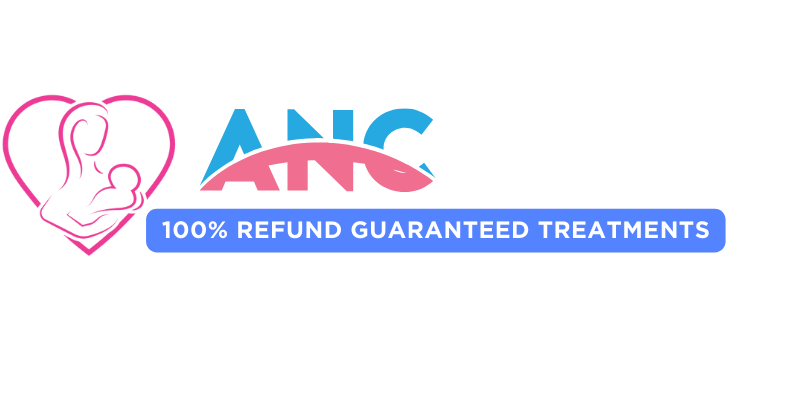Welcome to a journey through the complex and controversial realm of Gender Selection Treatment—a topic that has sparked as much interest as debate. The desire to choose the sex of one’s child has propelled science and medicine to develop methods that were once unthinkable, leading to a crossroads of ethics, technology, and emotion. In this comprehensive blog post, we’ll first delve into “Understanding Gender Selection: An Overview,” laying the foundation for what gender selection entails and the reasons behind its growing appeal. We’ll then explore the “Techniques and Technologies Behind Gender Selection,” examining the cutting-edge procedures that make this choice a reality for prospective parents. As we navigate the “Ethical Considerations and Debates in Gender Selection,” we’ll confront the moral dilemmas that accompany the power to predetermine a child’s gender. Lastly, we’ll look at the “Success Rates and Challenges in Gender Selection Therapies,” scrutinizing the effectiveness and roadblocks facing those who undergo these treatments. Join us as we unpack the nuances of this multifaceted topic.Explore gender selection methods, their success, ethical debates, and the technology involved in gender selection therapies. A comprehensive guide for curious readers.
Understanding Gender Selection: An Overview
Delving into the nuanced domain of gender selection, it becomes immediately apparent that this realm of fertility treatment is replete with complex concepts, intricate methods, and is subject to a plethora of ethical debates. The overarching aim of gender selection is for prospective parents to have the ability to sway the odds of conceiving a child of a specific gender, and this comes with a labyrinth of medical and scientific considerations.
Encompassing a broad spectrum of approaches, gender selection typically manifests via several sophisticated reproductive technologies. The methods utilized can range from the more simple sperm sorting techniques, which pivot on the notion that sperm carrying the Y chromosome can be separated from those carrying the X chromosome, to the more advanced and contentious Preimplantation Genetic Diagnosis (PGD), where embryos created through IVF are screened for their chromosomal makeup before being chosen for implantation based upon their gender.
Given the multifaceted nature of gender selection, individuals and couples exploring this path are urged to contemplate an array of consequential factors, encompassing not only the technical and procedural aspects but also the profound ethical considerations and societal impacts that arc across the specter of these decisions; these concerns are particularly potent when acknowledging the historical and ongoing struggles for gender equality and the potential implications of such technologies in reinforcing gender biases.
Techniques and Technologies Behind Gender Selection
The realm of reproductive medicine has evolved significantly in recent years, with sophisticated techniques and technologies being developed in the field of gender selection. For couples and individuals with a desire to choose the sex of their future child, science and technology have paved the way with methods that range from pre-implantation genetic diagnosis (PGD) to more controversial procedures like sperm sorting. These advancements not only provide choices but also stir profound ethical discussions regarding their use and application.
One highly advanced technique central to gender selection is Pre-implantation Genetic Diagnosis, commonly referred to as PGD, which is used in conjunction with in vitro fertilization (IVF) to select embryos of a preferred gender before they are implanted in the uterus. This process involves carefully extracting one or two cells from an IVF embryo and analyzing them for chromosomal makeup, allowing medical professionals to determine the sex of the embryos with remarkable accuracy, and thereby offering couples the possibility to choose which embryos to transfer. Yet, the intricate nature of this technique requires both state-of-the-art technology and specialized skill to perform correctly, ensuring viable embryos are not compromised during the procedure.
Another method that features within gender selection practices is the Ericsson Method, which revolves around separating sperm based on the weight of the X (female) and Y (male) chromosomes, with the heavier X-bearing sperm theoretically sinking faster, thereby allowing for a selection process. Although less invasive than PGD and IVF, sperm sorting has its own set of complexities and carries a lower accuracy rate for selecting the desired gender. Debates constantly surround these technologies, weighing the joy of potential parents selecting their child’s gender against ethical considerations, which include the long-term social implications and the prudent use of medical resources.
Ethical Considerations and Debates in Gender Selection
The practice of gender selection involves choosing the sex of a baby prior to conception or ensuring a desired sex through medical procedures; naturally, this has sparked a plethora of ethical considerations and debates around the globe. In societies that exhibit a strong preference for one gender over another, often for cultural or economic reasons, the possibility of gender selection has exacerbated concerns about gender imbalance and its subsequent social effects. These concerns are not unfounded, as significant imbalances can disrupt the fabric of societal norms and create far-reaching economic and social implications.
Furthermore, discussions about gender selection delve into the morality of such practices, especially when considering the commodification of life where potential children may be valued not for their unique individuality, but for their sex. The ethical debates also question the parental rights and boundaries – to what extent should parents be able to decide on the characteristics of their offspring? As such, the discourse extends into the philosophical realm, challenging our understanding of natural law, human intervention, and the moral justification of shaping future generations according to personal desires.
Gender selection, while boasting advancements in reproductive technologies, bears witness to a labyrinth of ethical considerations, including the fair access to medical technologies across different socio-economic strata. With treatments often having a hefty price tag, it raises issues about social equity and the potential widening of social disparities. These multifaceted ethical debates ensure gender selection remains a heavily scrutinized topic, emphasizing the need for a carefully balanced approach that weighs the benefits against potential societal costs.
Success Rates and Challenges in Gender Selection Therapies
The realm of gender selection has become increasingly intriguing as couples and individuals seek to have a child of a specific gender, often for a variety of personal, cultural, and medical reasons; however, the success rates and challenges associated with gender selection therapies are multifaceted and vary widely. While some techniques have shown relatively high success rates, the entire process is far from straightforward—with challenges ranging from ethical concerns to the financial burden and emotional impact of such procedures on the hopeful parents-to-be.
Modern gender selection methods, such as Preimplantation Genetic Diagnosis (PGD) coupled with In Vitro Fertilization (IVF), claim to offer success rates that can be impressively high, often cited as being upwards of 90% in selecting the desired gender; however, these numbers do not always paint the full picture, as they do not account for the complexity of individual fertility issues, the IVF process itself, or the potential for multiple cycles needed to achieve a successful pregnancy. Furthermore, the efficacy rates of less technologically advanced methods, such as sperm sorting, can significantly vary, indicating that while science has made incredible progress, it has not yet achieved a universal solution that guarantees outcomes in gender selection.
The challenges in gender selection go beyond just the biotechnical aspects; the practice raises numerous ethical questions, including the potential for gender imbalances in society and the value ascribed to one gender over another. Additionally, regulatory frameworks differ globally, creating a complex mosaic of legalities that prospective parents must navigate. These ethical and legal considerations add layers of complexity that can influence not only the access to but also the decision-making process of those contemplating gender selection therapies. It’s clear that while the success rates of these therapies can be promising, the journey is fraught with notable challenges at every turn.

